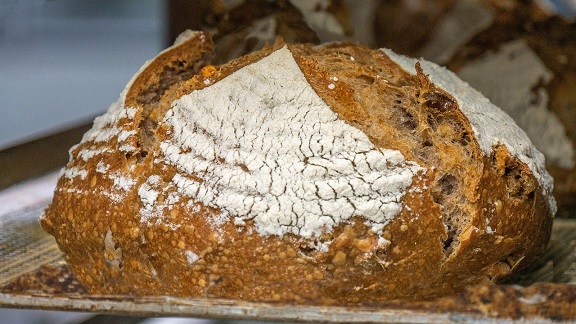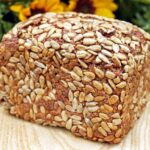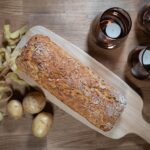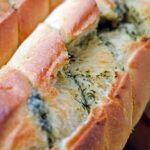
Nutty, wholesome, and wonderfully aromatic, Dinkelbrot – German Spelt Bread – is a traditional favorite making a big comeback in modern kitchens. Made from spelt flour, an ancient grain prized for its rich flavor and nutritional value, Dinkelbrot is lighter than rye but heartier than wheat, with a slightly sweet, nutty note that makes every slice satisfying.
Perfect for everyday sandwiches or served warm with butter, this rustic bread is a must-try for anyone seeking an authentic taste of Germany’s baking heritage.
The Origins of Dinkelbrot
Spelt, or “Dinkel” in German, has been cultivated in Central Europe for over 5,000 years. While it fell out of favor during the industrial grain revolution, it’s been rediscovered in recent decades for its health benefits, digestibility, and full-bodied taste.
Dinkelbrot has deep roots in southern Germany, especially in Swabia and Bavaria. Traditionally enjoyed as part of a Brotzeit (light evening meal), it’s valued for its fiber-rich content and dense texture, yet its mild flavor makes it a hit with adults and kids alike.
Looking for other rustic bakes? Explore our Schwarzbrot – German Black Bread and Bauernbrot – Farmer’s Bread for more hearty staples.
Ingredients & Preparation (Step-by-Step Recipe Guide)
Ingredients for Authentic Dinkelbrot
- 500 g (4 cups) spelt flour (whole or light)
- 1 packet (7 g) dry active yeast
- 1 tsp sugar or honey
- 10 g (2 tsp) salt
- 350–375 ml (1½ cups) warm water
- 2 tbsp olive oil or melted butter
- 1 tbsp apple cider vinegar (optional, for longer shelf life)
- 2 tbsp sunflower or flax seeds (optional)
Optional tools: Loaf pan, kitchen scale, mixing bowl, dough scraper
How to Make Dinkelbrot (Step-by-Step Instructions)
Step 1: In a bowl, mix warm water, sugar, and yeast. Let sit for 10 minutes until foamy.
Step 2: In another bowl, combine spelt flour, salt, and seeds (if using). Add yeast mixture, oil, and vinegar.
Step 3: Mix and knead the dough gently for 5–7 minutes. Spelt dough is softer and more fragile than wheat—avoid over-kneading.
Step 4: Cover and let rise in a warm place for 1 hour, or until doubled.
Step 5: Gently shape into a loaf and place in a greased or parchment-lined loaf pan. Let rise again for 30–45 minutes.
Step 6: Preheat oven to 200°C (390°F). Bake for 40–45 minutes. For extra crustiness, place a pan of water in the oven.
Step 7: Let cool in the pan for 10 minutes, then transfer to a wire rack to cool completely.
Tips:
- Spelt flour absorbs water quickly—add water gradually.
- Handle dough gently to keep the crumb light and airy.
- Let bread rest at least 30 minutes before slicing.
Serving Suggestions & Variations
How to Serve Dinkelbrot
Slice thick for open-faced sandwiches, or toast and serve with jam, cheese, or avocado. It’s ideal for both savory and sweet pairings and a great addition to any breakfast spread.
Variations & Regional Twists
- Herb Dinkelbrot: Add chopped rosemary, thyme, or chives to the dough.
- Seed-crusted: Roll the loaf in sesame, sunflower, or poppy seeds before baking.
- Dinkel & Emmer Blend: Combine with emmer flour for ancient grain richness.
Hungry for more wholesome options? Check out Vollkornbrot – Whole Grain Bread and Roggenbrot – Rye Bread next.
Dinkelbrot is the perfect mix of tradition and nutrition—a flavorful, soft-crumbed loaf that’s easy to make and even easier to enjoy. Whether you’re serving breakfast, packing a lunch, or elevating your dinner table, this spelt bread brings warmth and authenticity to every meal.
Discover more rustic German breads in our German Baking Recipes collection and bake your way through time-honored tradition.







